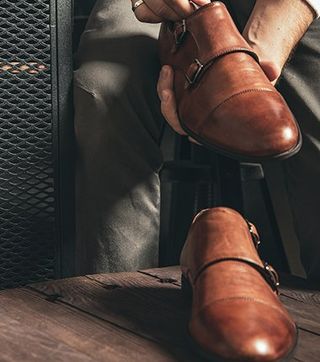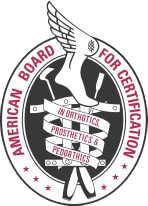Foot RX
Working With Local Podiatrists To Find the Perfect Footwear For You
Talking to Your Local Medical Team of Podiatrist and local C.Ped at Vanek’s Shoe Repair
If you are curious about orthotics, or think you may need a device, talk with your podiatrist and local C.Ped at Vanek’s Shoe Repair about the problems you would like to address. He or she will be able to help you decide on the best type of orthotic device for you.
Questions that you may want to consider asking your doctor and local C.Ped at Vanek’s Shoe Repair about orthotics include:
- Which materials would benefit me most during activities such as __________________? (Fill in the blank with the activities you participate in most)
- What brand offers the best support and comfort?
- Can the orthotic device you recommend be purchased over the counter or for less money?
- If I begin using orthotics, will I need to wear them for the rest of my life?
- Is there anything else I can do to prevent foot problems or foot injuries?
Orthotics are orthopedic devices made of lightweight materials that range in complexity from simple shoe inserts bought over-the-counter to custom-made devices that require impressions, casting, and computer technology to create. The two should not be confused, however, since there is a great difference is quality and effectiveness. Mass-produced, “one-size-fits-all” orthotics cost less, but do not always properly correct the problem in the buyer’s foot, and they sometimes do more harm than good. Still, the purpose of all orthotics is to support or correct various foot conditions such as Achilles tendonitis, bunions, plantar fasciitis, and tarsal tunnel syndrome, among others. If you are suffering from one of these conditions, you may want to discuss orthotics first with your podiatrist.
Orthotics are helpful in various ways. Not only do they help restore your ability to walk, run, and jump, but they can also reduce pain and swelling, increase the stability of unstable joints, and provide better arch support. They also ease problems in other parts of the body, such as the back and hips.
Helpful Solutions For Your Foot Pain
- Cushioned heel: This cushion is a wedge of compressible rubber that is inserted into the heel to absorb impact during the heel strike. The cushion is also used to reduce unnecessary knee movement by allowing more rapid ankle plantar flexion (when in motion, this is the point when the heel is off the ground and you are moving forward).
- Heel & Sole wedges: Depending on their design, these are used to promote inversion (turning inward) or eversion (turning outward), and prevent the hind foot (the ankle region) from sliding down the incline to correct by the sole wedge pronation and supination
- Heel flares: These are used to resist inversion or eversion and to provide stability.
- Extended heel: Also known as a Thomas heel, it runs up the front of the medial side to provide support to the medial longitudinal arch (the highest and strongest of the three arches located in each foot). This can also be reversed to support the front side of the lateral side to provide stability to the lateral longitudinal arch.
- Heel elevation: This is a shoe lift to help those who have conditions or deformities that leave one leg shorter than the other by more than a quarter of an inch.
- Metatarsal bars: These bars have a flat surface placed behind the metatarsal head, and are used to relieve pressure from the metatarsal heads.
- Rocket bar: When patients have problems such as ulcers, this device can be used to shift the rollover point from the metatarsal head to the metatarsal shaft in order to avoid discomfort. This orthotic is evenly curved and lies behind the metatarsal head.
- Sole flare: These promote stability and can be used to resist either inversion or eversion, depending on their design.
- Metatarsal pads: Like rocket bars, these pads are used to redistribute pressure and stress from the metatarsal heads to the shafts in cases of Metatarsalgia.
- Scaphoid pads: These provide additional support to the bones and joints in the midfoot and hindfoot.
- Orthotics:
Can also be made for the entire foot. Foot orthoses extend from the posterior border of the foot (the ankle region), to a point just behind the metatarsal heads (the forefoot region) to accommodate an abnormal foot and to help restore more normal lower limb biomechanics. For example, sesamoid inserts are a ¾-inch-thick addition to an orthosis, with an extension under the big toe to transfer the pressure from the shorter, first metatarsal head onto its shaft. UCBL (University of California at Berkeley Laboratory) inserts are made of rigid plastic that is fabricated over a cast of the foot. This device embraces the heel and mid-foot regions, and it has medial, lateral, and posterior walls
BROWSE OUR WEBSITE
CONTACT INFORMATION
Phone:
Address:
12460 Southwest Broadway Street
Beaverton, OR 97005
Business Hours:
- Monday
- Closed
- Tue - Fri
- -
- Saturday
- -
- Sunday
- Closed
OUR LOCATION
Content, including images, displayed on this website is protected by copyright laws. Downloading, republication, retransmission or reproduction of content on this website is strictly prohibited. Terms of Use
| Privacy Policy


